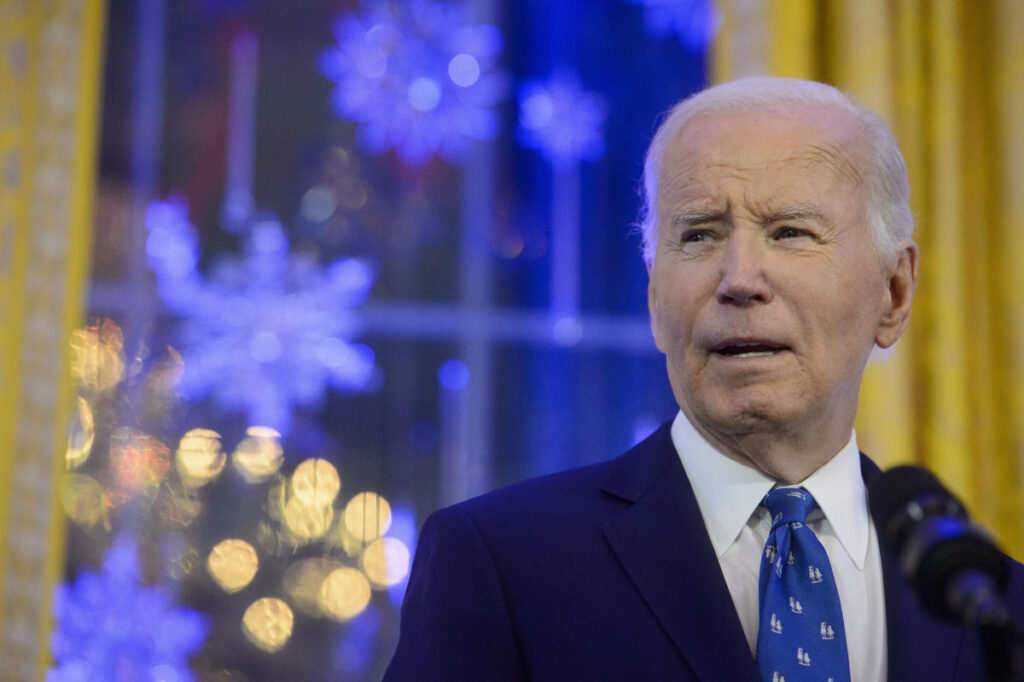On Thursday, President Joe Biden announced an ambitious new climate target aimed at reducing greenhouse gas emissions by 61-66 percent by 2035, a significant escalation from his earlier commitment to achieve a 50-52 percent reduction by 2030 from 2005 levels. This updated goal reflects the growing urgency surrounding climate commitments but casts a shadow of uncertainty as it faces impending challenges from the incoming administration of President-elect Donald Trump. Trump, known for his pro-fossil fuel stance, is expected to disregard Biden’s climate initiatives, potentially unraveling progress made thus far. Despite the anticipated resistance, Biden’s announcement serves as a marker for states, cities, and businesses striving towards substantial climate action, even as federal policy may take a backseat under Trump’s leadership.
The ambitious nature of Biden’s new target highlights the achievements made during his presidency while signaling what is possible for the future. This move reflects increasing pressure from environmental advocates urging decisive action in the face of climate change, even as the political landscape shifts. U.S. officials argue that the new targets represent a crucial message to the global community about America’s potential contributions to climate change mitigation, especially vital as the global focus turns towards meeting the objectives set forth in the Paris Agreement. Biden reiterated his belief in American industry’s capacity for innovation and investment in clean energy technologies, aiming to motivate governors, mayors, and business leaders to pursue the outlined targets despite federal complexities.
Biden’s commitment includes a significant emphasis on reducing methane emissions by at least 35 percent, reflecting the administration’s focus on this short-lived but impactful greenhouse gas. This reduction strategy is facilitated through an array of measures, including implementing existing Biden-era policies, bolstering state and local initiatives, and leveraging advancements in renewable energy technologies. However, achieving these ambitious mitigation goals is fraught with challenges, including the anticipated rollbacks of environmental regulations under Trump and the political hurdles in Congress regarding renewable energy initiatives. These factors create an uncertain landscape for the realization of the new climate target, raising questions about the continuity of progress made thus far.
The announcement identifies the 2035 climate goals as “nationally determined contributions” (NDCs), which are integral to the global climate framework alongside the Paris Agreement’s directives. Some advocates suggest that these new targets could act as a guiding principle for future federal policy, even in the face of a less climate-centric administration. Various analyses indicate that the target is on the lower end of what scientific consensus suggests is necessary to mitigate climate change comprehensively, with support from leaders in environmental organizations. Investments stemming from the Inflation Reduction Act and other existing policies are emphasized as vital to enable progress while underscoring the impact of potential legislative shifts on investment flows in the clean energy sector.
Despite presenting an ambitious target, it is clear that significant efforts will be required at multiple governmental levels to achieve the desired emissions reductions. State-level initiatives, alongside private sector investments, are critical for realizing the proposed climate goals, especially as federal support may diminish under a new administration. The Biden administration acknowledges that reaching these targets necessitates substantially heightened action at the state level, predicting that a lack of federal initiatives could considerably slow progress, making goals even harder to reach. The complexities embedded in transitioning towards a zero-emissions trajectory emphasize the necessity for comprehensive state-driven policies in conjunction with federal support.
As environmental analysts project a wide array of potential emissions reductions ranging from 24-67 percent by 2035 based on varying political scenarios, the urgency to act remains paramount. The continued existence and potential benefits of the Inflation Reduction Act offer a pathway towards significant emissions cuts; however, the looming threat of repeal poses a significant risk. Analysts infer that Biden’s setting of the new targets serves both as a commitment to a sustainable future and a challenge to ensure meaningful action despite the coming political hurdles. With Biden’s administration recognizing the fragile nature of existing progress, the call for an intensified commitment to climate action resonates strongly as stakeholders seek to identify pathways to achieve these ambitious climate goals amidst potential obstacles on the horizon.

